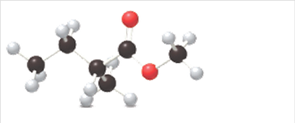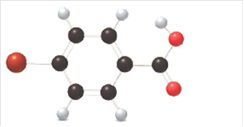
Concept explainers
(a)
Interpretation:
The acceptable name for the following compound should be determined:

Concept Introduction:
(b)
Interpretation:
The acceptable name for the following compound should be determined:

Concept Introduction:
Functional groups are the groups of atoms or atoms which are bonded with the parent carbon chain in the organic molecule and are responsible for the physical and chemical properties of the compound. In organic chemistry, there are different functional groups such as carboxylic acid, alcohol, ester, or amide.
(c)
Interpretation:
The acceptable name for the following compound should be determined:

Concept Introduction:
Functional groups are the groups of atoms or atoms which are bonded with the parent carbon chain in the organic molecule and are responsible for the physical and chemical properties of the compound. In organic chemistry, there are different functional groups such as carboxylic acid, alcohol, ester, or amide.
Want to see the full answer?
Check out a sample textbook solution
Chapter 17 Solutions
EBK GENERAL, ORGANIC, & BIOLOGICAL CHEM
- explain the following observations a. propanol is more water soluble than propane b. propanol is more water soluble than propanonearrow_forwardCan you answer and explain d-f?arrow_forward2. Differentiate acetic acid from hydrochloric acid in terms of. a. Boiling point b. Acidity c. Solubility in ethyl alcoholarrow_forward
- Can someone help me with the naming?arrow_forwardLabel the functional group(s) in each compound as an alcohol, ether, acetal, or hemiacetal.arrow_forwardWhat kind of solvent ingredients is usually used in the concentrations of 4-10 percent in skin care products and their function is to soften skin cells and to lessen wrinkles? A. Ethly acetate B. Alpha hydroxyl acids C. Phenols and phenol derivatives D. Aliphatic alcoholsarrow_forward
- 3.63 Quinapril (trade name Accupril) is a drug used to treat hypertension and congestive heart falure. a. Identify the functional groups in quinapril. b. Classify any alcohol, amide, or amine as 1°, 2°, or 3°º. H. C. At which sites can quinapril hydrogen bond to water? d. At which sites can quinapril hydrogen bond to acetone [(CH3),CO]? e. Label the most acidic hydrogen atom. f. Which site is most basic? quinaprilarrow_forwardGive an acceptable name for these compounds.arrow_forward17. Which functional groups are in the following molecule of aspirin? HO, a benzene ring, an ester, a ketone, and an alcohol b. a benzene ring, two ketones, an ether, and an alcohol a benzene ring, a carboxylic acid, an ether, and a ketone d. a benzene ring, a carboxylic acid, and an ester a. c.arrow_forward
 Chemistry for Today: General, Organic, and Bioche...ChemistryISBN:9781305960060Author:Spencer L. Seager, Michael R. Slabaugh, Maren S. HansenPublisher:Cengage Learning
Chemistry for Today: General, Organic, and Bioche...ChemistryISBN:9781305960060Author:Spencer L. Seager, Michael R. Slabaugh, Maren S. HansenPublisher:Cengage Learning Chemistry: Principles and PracticeChemistryISBN:9780534420123Author:Daniel L. Reger, Scott R. Goode, David W. Ball, Edward MercerPublisher:Cengage Learning
Chemistry: Principles and PracticeChemistryISBN:9780534420123Author:Daniel L. Reger, Scott R. Goode, David W. Ball, Edward MercerPublisher:Cengage Learning Introductory Chemistry: An Active Learning Approa...ChemistryISBN:9781305079250Author:Mark S. Cracolice, Ed PetersPublisher:Cengage Learning
Introductory Chemistry: An Active Learning Approa...ChemistryISBN:9781305079250Author:Mark S. Cracolice, Ed PetersPublisher:Cengage Learning Organic And Biological ChemistryChemistryISBN:9781305081079Author:STOKER, H. Stephen (howard Stephen)Publisher:Cengage Learning,
Organic And Biological ChemistryChemistryISBN:9781305081079Author:STOKER, H. Stephen (howard Stephen)Publisher:Cengage Learning, General, Organic, and Biological ChemistryChemistryISBN:9781285853918Author:H. Stephen StokerPublisher:Cengage Learning
General, Organic, and Biological ChemistryChemistryISBN:9781285853918Author:H. Stephen StokerPublisher:Cengage Learning




